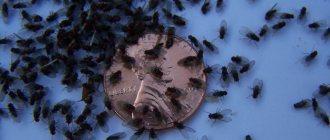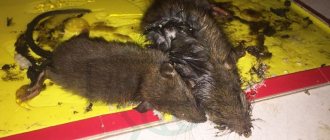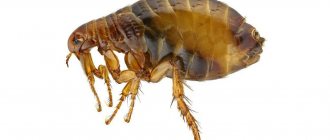Initially, non-profit gardening partnerships were created as an association of amateur gardeners. Owners of plots in SNT grow fruit trees, garden plants, flowers on their territory, and build small houses where they can shelter from bad weather and spend the night.
Over time, a garden house can turn into a residential building with comfortable living conditions, where you can live (if there is heating) even in winter. And over time, gardeners have a desire to acquire a small subsidiary farm in their garden plot, for example, to keep rabbits, poultry, and other small animals.
- 1 Law
- 2 Discussion of the issue on the OS
- 3 Standards for keeping livestock
- 4 About chickens and their breeding
- 5 Veterinary and sanitary requirements
- 6 Preventive measures to prevent diseases
- 7 Where to put a chicken coop
- 8 Where you can’t breed
Is the legislation on SNT allowed for raising chickens on the plots of such a village? What sanitary standards exist for raising poultry? It is important to study the provisions of the laws in advance so as not to conflict with neighbors and not subsequently pay fines for violating the rules of residence in the gardening community.
Is it possible to keep chickens in SNT and what is the procedure for running a private farm in this area?
Law
ATTENTION! Gardening and gardening on SNT sites is regulated by Federal Law No. 66.
Article 1 of this Federal Law specifies the purposes of using land in gardening non-profit partnerships. The land is intended by law for growing garden and vegetable plants.
It can also be used for relaxation. There is no direct indication of whether or not it is possible to raise chickens on the SNT site.
But the absence of a ban does not mean that the owner of a garden plot can keep a cow or raise pigs on his summer cottage. There are strict sanitary standards for the use of land in partnerships.
Manure from livestock should not end up in water bodies on the territory of SNT , and livestock should not cause any inconvenience to neighbors. Therefore, we are not talking about raising cattle or pigs.
You should also competently engage in raising poultry:
- SNiP dated February 30, 1997 allows the installation of cages for small livestock and poultry in garden plots, but such farming should not harm the land or pollute it.
- Gardeners must arrange their plot taking into account the types of permitted use and purpose.
- The rules of keeping do not allow chickens to be released near neighboring plots; a separate area must be allocated for their pen.
- The easiest way to resolve the issue of running a personal household for SNT members is at a general meeting.
What to do if your neighbor's chickens are bothering you
Let's consider the opposite situation: you yourself have become the injured party, the constant noise from the neighbor's chickens, the crowing of roosters, as well as unpleasant odors are disturbing you. In this case, you need to know in what situation and where to file a complaint against your neighbors, and how to correctly draw up a statement.
When can you file a complaint?
The reasons may be improper placement of the pen or improper housekeeping by your neighbors, for example, uncontrolled walking of birds.
Often in rural areas, neighbors organize poultry walking outside their area. Moreover, some can put up a fence, while others do not even do this.
I often remember situations from my childhood when it was impossible to pass through certain streets because of the numerous geese, chickens and other domestic animals grazing uncontrollably in our working-class village. This was a real misfortune not only for me, but also for other children.
Here is the opinion of lawyer Vladimir Kravchenko on this matter:
It is illegal to keep animals this way. There is an administrative commission. She deals with the improvement of streets and green spaces. Regarding the issue of chickens and geese walking uncontrollably, you need to contact them. Residents should contact the administrative commission at the municipality. Then the owners of these chickens are called and asked not to do this again. And if a person disobeys, then a fine is expected for the violation. You can definitely keep birds on your own land. But they are not allowed to walk the streets. As for cows and pigs, there are separate regulations. No more than a certain number of goals. For example, you cannot keep 50 pigs on your home plot.
Vladimir Kravchenko
https://pticevod.forumbook.ru/t6398-topic
The situation may vary in different regions of the Russian Federation - for example, in the Krasnodar Territory there is Article 2.4 of the law on administrative violations. It contains information regarding the uncontrolled keeping of livestock and poultry and imposes a fine for these actions in the amount of 3 thousand rubles for ordinary citizens, 20 thousand rubles for officials and 50 thousand rubles for legal entities.
You can try to come to an agreement with your neighbors and resolve the dispute amicably. If this option is useless, know: noise, smell, violation of living conditions and walking conditions - all this is a reason to file a complaint against your neighbors with the appropriate authority.
Night rooster crow is one of the causes of conflict with neighbors
“Who are the judges?”
When you have disputes with your neighbors regarding outbuildings, you need to contact the district administration to resolve them. It happens that the conflict after this appeal is still not resolved. To prove your opinion, you can use a site plan indicating all the distances and boundaries on it. You need to order a copy of the registration certificate of the neighbor's property from the BTI.
If the process is delayed, it is better to contact the prosecutor's office with a request to check the location of buildings and sewer systems of neighbors for compliance with federal law.
And who should you complain to if you are exhausted by the crowing of roosters at night and their aggressive behavior on the street? It is best if your appeals to the administration and other authorities are supported by evidence of harm to you or the environment. This includes, for example, testimony from other people confirming your complaints, or certificates confirming bodily harm caused by the bird. If you can provide a video recording of rooster crow at night, it will also be taken into account when the authority makes a decision.
Making a complaint
Usually a complaint is submitted in free form in writing.
The so-called “header” of the document is drawn up in the upper right corner; here you need to indicate:
- address and full name of the body to which the complaint is sent;
- position and full name of the person considering the complaint;
- Full name of the compiler and his postal address;
- the applicant's telephone number and email (if any).
Next, in the middle of the sheet, write the word “complaint” and state the essence of the case. Be sure to mention in your complaint if you tried to verbally resolve the conflict with your neighbors, but it did not work out. It is advisable to refer to specific violations of the law.
At the end of the document, formulate your requirements: for example, are you asking to completely remove the chicken coop from the neighbor’s property or will moving it be sufficient?
The complaint, like any other document, must meet the requirements of an official business style, and not have lyrical digressions, speculation, curses and manifestations of colloquial speech.
Discussion of the issue on the OS
The general meeting is the main body that establishes the norms and procedures for conducting subsidiary farming on the plots of the members of the partnership. But it is also necessary to take into account the provisions of the legislation on SNT .
If gardeners want to raise chickens or other animals on the territory of the village, all aspects can be discussed together and uniform rules adopted. What can be decided at the meeting?
- It is worth discussing how many chickens will be kept in a private garden plot (maximum).
- What other pets can you get?
- How will the issue of procurement of feed and removal of manure be resolved (if it cannot be used as fertilizer).
- Other questions may arise.
Land in gardening non-profit partnerships is initially intended for gardening, vegetable gardening and recreation.
The right of members of the partnership to normal conditions for recreation should not be violated. Therefore, at the beginning of the organization of SNT, it is necessary to discuss the issue of running a subsidiary farm, to find a compromise between all neighbors.
Chapter 3. Rules for keeping poultry on the territory of the settlement
Chapter 3. Rules for keeping poultry on the territory of the settlement
3.1. Poultry keeping
3.1.2. It is permitted to transport birds in cages by land, subject to conditions that prevent disturbance to passengers.
3.1.3. Birds found on the streets of populated areas outside the territory of households are subject to capture.
3.2. Responsibilities of poultry owners
3.2.1. The owner of birds is obliged to maintain them in accordance with zootechnical standards and veterinary and sanitary requirements;
3.2.2. Provide, upon request, to veterinary specialists birds for examination, diagnostic studies, preventive vaccinations and therapeutic and prophylactic treatments;
3.2.3. Immediately notify the veterinary service of all cases of sudden illness in birds or suspected illness of a bird and, until the arrival of a veterinary specialist, isolate the sick bird and do not self-medicate;
3.2.4. Provide water and feed that are safe for animal health and the environment and that comply with veterinary and sanitary requirements.
3.3.1. Release poultry onto the streets, front gardens, parks, squares, lawns and playgrounds, and adjacent areas of multi-apartment housing stock;
3.3.3. Grazing of poultry outside of land plots owned by individuals, organizations, individual entrepreneurs on the right of ownership, right of permanent (perpetual) use, right of lease. In exceptional cases, grazing of poultry outside land holdings may be permitted in agreement with the municipal administration.
Open the current version of the document right now or get full access to the GARANT system for 3 days for free!
If you are a user of the Internet version of the GARANT system, you can open this document right now or request it via the Hotline in the system.
Source
Livestock standards
ATTENTION! Breeding chickens and small livestock on the territory of a garden non-profit partnership is determined by Federal Law No. 4979-1, adopted on May 14, 1993.
This law defines the basic sanitary and veterinary standards for breeding poultry and livestock in SNT, taking into account the purpose of the garden partnership and the land in it:
- According to the Federal Law, in order to raise small livestock and chickens at the dacha, in a garden village, it is necessary to build premises for them with such living conditions that will prevent the occurrence of diseases.
- Animals and poultry should be delivered to or removed from the site in agreement with the competent authorities. This is especially true for driving livestock.
- You can feed domestic animals only with food that meets sanitary and veterinary standards. Food additives must be certified.
- They oblige chickens or small livestock to be kept away from their neighbors. Animals should not create inconvenience for them.
Paperwork
If the owner of the plot intends to engage in poultry breeding solely for his own needs, then a permit for such activity is not required.
In a situation where there is no room suitable for the format on the site, it must be built by following these steps:
- obtain a permitting act from municipal specialists who have approved the construction with the BTI, the State Register and coordinating structures - energy supervision, fire, sanitary and veterinary services.
- order a poultry house design and coordinate it with architecture and urban planning experts;
- carry out construction work;
- submit an application for putting the poultry house into operation by a visiting committee of the executive authority;
- re-register the registration certificate for the house due to the changed parameters of home ownership.
After that, you can raise chickens on your property on a completely legal basis.
About chickens and their breeding
The most important requirements for members of a gardening partnership who decide to raise chickens on their plots are that the animals must be safe and should not create inconvenience for neighbors.
It is also necessary to create normal living conditions for this poultry.
The chicken coop must be maintained at normal temperature, in order, and ventilated regularly. Sanitation must also be carried out according to the required schedule. Birds should be examined periodically by a veterinarian.
The chicken coop should be placed as far as possible from neighbors, because chickens make noise, especially in the morning, and can interfere with rest.
At what distance from the fence can you build a chicken coop, poultry house, pigsty and cowshed?
When deciding at what distance from the fence you can build a chicken coop (poultry house), pigsty, cowshed, you need to remember that this is one of the most difficult stages in establishing normal relations between neighbors. The distance from the poultry house to the neighbor’s fence is often maintained according to standards corresponding to ordinary outbuildings, and this is not agreed upon with SNiP. The rules, which have been in force since 2010 at the legislative level, are aimed at ensuring the convenience of living for both parties. This is why it is so important to know how much to set back from the fence when building a simple barn, chicken coop, or any other structure.
can mercury stick to the wall
Veterinary and sanitary requirements
IMPORTANT! Before you start such a farm, you also need to get acquainted with the Law of the Russian Federation No. 4979-1 “On Veterinary Medicine”.
It must be observed regardless of where the subsidiary farm is located - on farmland or on a small garden plot:
- The provisions of the law pay great attention to the construction of outbuildings where livestock or poultry will live.
- During construction, you should adhere to hygienic and epidemiological requirements for maintenance.
- According to the law, the chicken coop must be located on a slope so that the drainage of surface water is organized.
- The drainage must be properly organized.
- The farmstead with chickens is fenced.
- If a gardener breeds several types of poultry, for each he builds a separate farmstead and a separate shelter room.
- There are requirements for the selection of materials for building a chicken coop. For the floor, you need ones that are resistant to drains and also retain heat well.
- A prerequisite for building a chicken coop is the presence of ventilation. It can be natural or mechanical.
- Chickens suffer from many diseases, including infectious ones. You should monitor their condition, prevent epidemics, and get vaccinated on time.
- Vaccination is carried out by a veterinarian and using certified products.
The management of SNT must know how much poultry is raised on the plots of the partnership members. If infectious diseases are suspected, the bird owner should inform neighbors, especially those who also raise chickens.
Content requirements
In Article 13 of Law No. 4979-1, the general requirements for keeping poultry as a category of domestic animals are disclosed in detail:
- the structure where birds live temporarily (fences or pens) or permanently must be adequate in area and equipment;
- owners are required to provide birds with drinking water, dry or wet food , as well as feed additives that are certified as not hazardous to the health of the bird and not capable of polluting areas adjacent to the construction;
- It is permitted to use only such dry nutritional rations or vitamin and mineral concentrates that have been tested by the veterinary service and do not violate international standards;
- identification by veterinary service specialists of facts of feeding poultry with diets or additives that do not have certification should lead to clarification of the point of production and sale of these products for the seizure and cessation of such practices;
- if it is necessary to take poultry to the market, for processing, to an exhibition or off-site for other purposes, the route for transporting or moving chickens must be coordinated with veterinary control regarding the prevention of the spread of infectious diseases of poultry.
Requirements of the Federal Service for Veterinary and Phytosanitary Surveillance
The provisions of Part 2 of the Order of the Ministry of Agriculture of the Russian Federation dated April 3, 2006 No. 103 put forward a number of requirements for the territories and structures in which poultry are supposed to be kept:
- construction only on areas with drainage and drainage for surface water;
- the presence of a fence and infrastructure in the form of water supply and gas supply , electricity and sewer networks;
- keeping chickens separately from other birds - ducks, geese, turkeys , as well as in the presence of an isolated exit from the structure for each type of poultry;
- allocation of areas directly adjacent to outbuildings for walking chickens separately from other species of birds and animals;
- interior decoration of the walls, ceiling and floor of the room with washable coatings resistant to disinfectants;
- resistance of the floor covering to heat loss , mechanical damage, aggressive drains containing chicken droppings, and disinfectants;
- ventilation of the room both natural and forced to create a stable microclimate;
- compliance with standards and implementation of measures to eliminate the risk of poultry disease;
- if possible, keeping only chickens on one site by one owner , without combining their raising with other types of domestic animals and poultry.
Veterinary rules for maintaining poultry housing
The provisions of Part 3 of the Order of the Ministry of Agriculture of the Russian Federation dated 04/03/2006 No. 103 provide precise instructions on what veterinary standards regulate structures in which poultry are kept.
Thus, in clause 3.1 it is assumed that such premises must meet the standards of Art. 13 Federal Law No. 4979-1 and be potentially favorable for birds to stay in them without risk to the health and life of the latter.
The text of clause 3.2 details the measures that must be taken to ensure optimal conditions for keeping poultry:
- if there is a risk of epizootics in the region, entry into the premises with poultry occurs after the shoes of the persons serving the poultry are disinfected in ditches filled with disinfectants;
- regular cleaning of the premises from droppings, feathers, food and dust;
- washing, as well as, if necessary, disinfection, equipment of the premises and containers in which the birds are offered feed, water and feed additives;
- careful collection and disinfection of droppings;
- general cleaning of the premises after changing a batch of poultry, removing bedding , washing and disinfecting all washable surfaces;
Separately, clause 3.3 specifies the standards for arranging premises for poultry in order to avoid its contact with wild relatives, potential carriers of infectious agents, which means isolating windows, doors or ventilation ducts with mesh barriers.
In clause 3.4. There are indications that unauthorized persons are not recommended to visit the poultry house, and to enter it, in accordance with clause 3.5, they must wear clean overalls, used only for work in this room, and work shoes.
Preventive measures to prevent diseases
The owner of a plot in SNT who decides to raise chickens must be aware of his responsibility for the safety and comfort of his neighbors and the entire community. It must also meet all the standards for arranging a chicken coop and pen, the requirements of Russian Federation Law No. 4979-1.
Compliance with the requirements for arrangement becomes an effective prevention of diseases of domestic animals:
- The chicken coop must have ventilation. The influx of fresh air will rid the room of a large number of pathogens.
- The poultry house needs to be cleaned regularly and removed from manure.
- Collected droppings should be disinfected.
- The floor, perches, drinking bowls and food trays are also disinfected.
- It is necessary to carefully select feed and nutritional supplements, and provide the bird with clean and fresh water.
- If there is a threat of infectious diseases, you need to lay a special disinfectant mat near the entrance to the chicken coop.
- It is necessary to maintain cleanliness at any time of the year. In summer, uncollected manure is a breeding ground for dangerous microorganisms. In winter it is a source of cold moisture,
- It is also recommended to ensure that wild birds (ideally in the backyard), which can carry the infection, cannot enter the chicken coop.
In Moscow and Volgograd there is no mention of a ban on raising chickens in dacha and gardening villages. You just have to follow the rules of the law and also think about your neighbors.
Additional circumstances
The distance defined as 4 m from the fence may be changed by local or regional authorities for small areas (in this case there must be a corresponding regulation), but this only applies to SNT.
In rural areas, the owner of a plot of land who breeds poultry or livestock must live on it to conduct subsistence farming. Under such conditions, building a pigsty or cowshed opposite a residential building or well means potential trouble.
The area of a plot in a village usually allows for the placement of outbuildings for specific purposes at a distance sufficient even according to fire safety and sanitary and hygienic standards. But when building a chicken coop and perch facing the windows of a residential building, this can cause legitimate indignation from neighbors, regardless of compliance with the prescribed removal.
So to determine the location of construction, you need to take into account not only the distance from the fence. The distance between the following objects also matters:
What to pay attention to
If we are talking about the law defining such things, it is worth remembering other important circumstances.
It is not prohibited in SNT to keep a small number of animals for one’s own needs. For example, a couple of chickens in a chicken coop or a goat for milk. The question of how far from the fence of a residential building a pigsty can be built is interpreted somewhat differently if the owner of the land intends to breed livestock for industrial purposes.
With a significant number of livestock, he must not only be guided by other standards so that residential buildings do not suffer from insects, odor and pollution. You need to obtain official permission to carry out such activities and pay taxes to the fiscal authorities for farming.
A poultry house (chicken coop), pigsty, barn or shed for keeping goats or ducks must be distanced so that it does not create either a potential environmental threat to the surrounding area or a significant inconvenience to neighboring houses where people live.
Where to put the chicken coop
SNiP 30-02-97 “planning and development of territories of country houses and gardening associations...” gives some rules for the placement of structures for chickens. According to this document, before construction it is necessary to develop design documentation and obtain a construction permit.
The location for the chicken coop and farmstead is selected taking into account the following standards:
- The structure for poultry must be located at a distance of at least 12 meters from any house - the neighbor's, the owner of the site.
- You must maintain a distance of at least 4 meters from the border with the neighboring property.
- If, however, the chicken coop is adjacent to the house, the distance from the entrance door to the living space to the doors of the chicken coop should be at least 7 meters.
- The area allocated for poultry must correspond to the area of the site. On a small plot (6-12 acres), no more than 30% of the land can be allocated for chickens .
Location of the house on the site according to the standards
The rules for the location of a residential building on a site are regulated by several documents, namely:
- SP 42.13330.2016;
- SP 53.13330.2011;
- SP 30-102-99;
- PZZ of local government.
In accordance with these documents, the house must be located in accordance with the following requirements:
- at least 3 meters from the neighbors’ fence;
- at least 5 meters from the red line of the street;
- at least 3 meters from the red line of passages.
The roof of the building must be built in such a way as to completely prevent water from draining or snow falling onto the territory of neighbors.
When placing a building, it is also necessary to comply with existing fire safety distances.
Where you can't breed
Activities on the site depend on the purpose, category of the land, and the purposes of its use. Federal Law No. 112 (Article 4, Clause 3) defines the categories of land on which subsidiary farming cannot be carried out. If you come across a plot belonging to this category, even located outside the city, it is prohibited to build utility structures for chickens on it.
ATTENTION! When receiving a plot of land in SNT, you should find out its characteristics and restrictions on the types of activities on it. The absence of prohibitions automatically becomes permission to breed chickens or other poultry.











